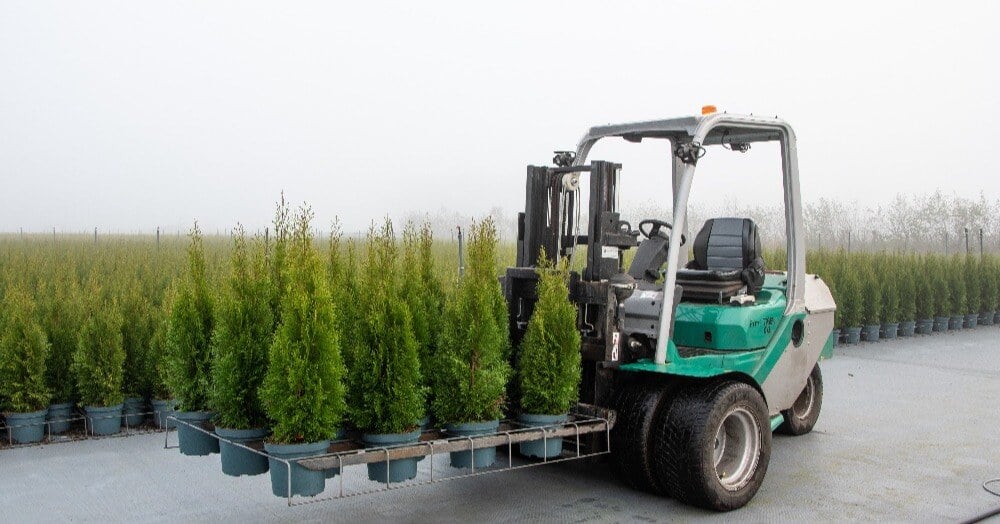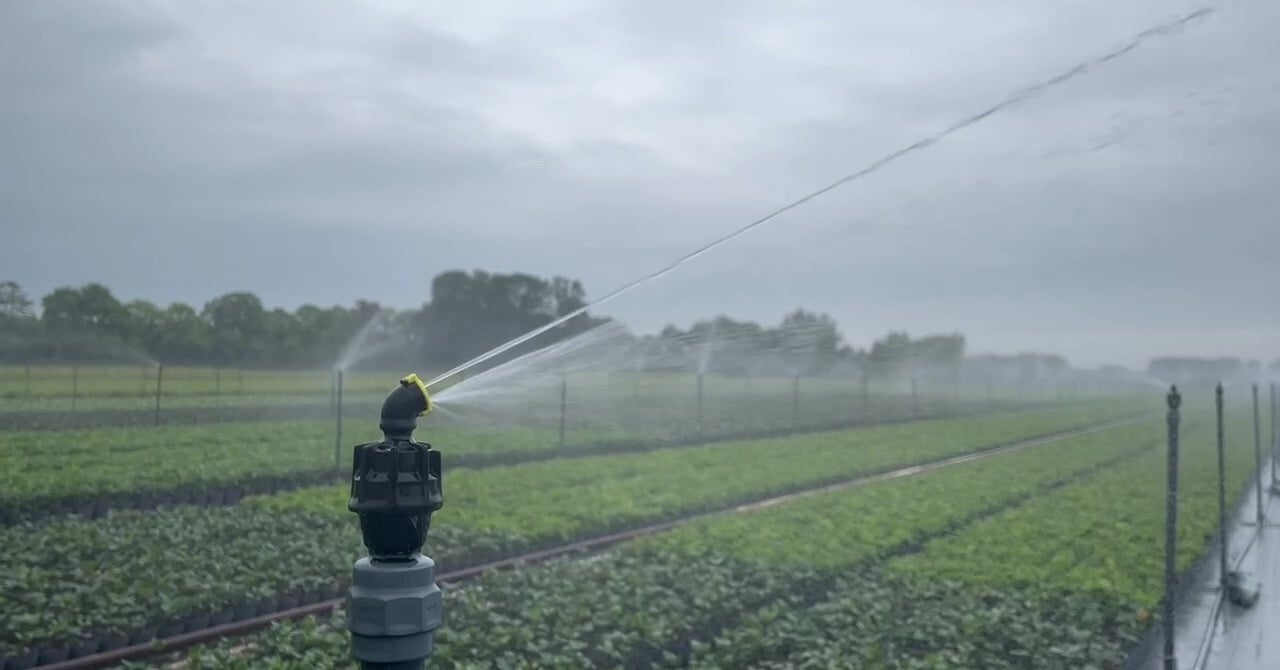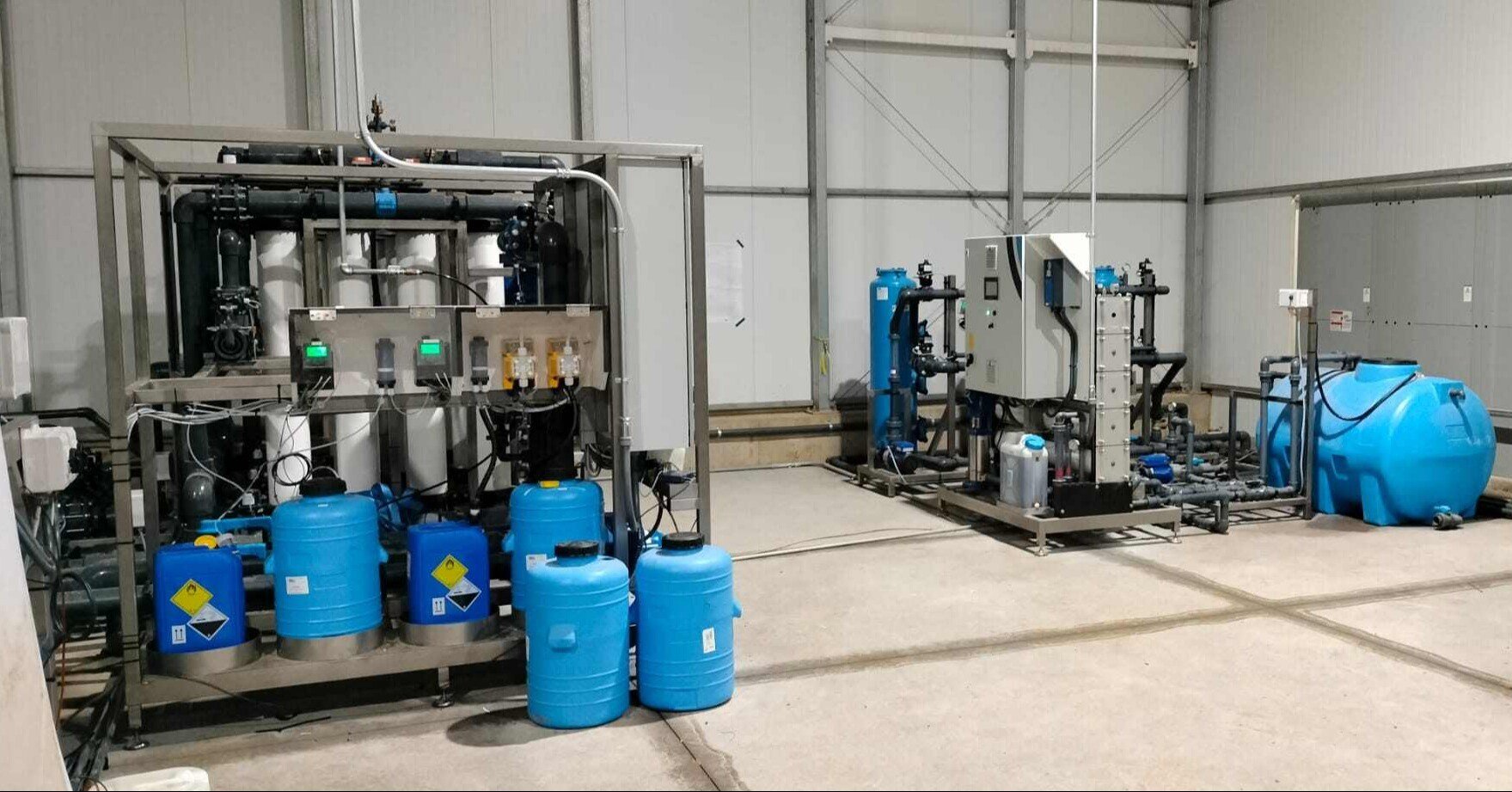- Prefer direct contact? +31 (0)79 593 38 00
- Language: English
A forklift could be the Ideal Internal Transport Solution for Growers

A forklift could be the Ideal Internal Transport Solution for Growers
Jul 29, 2024 9:05:13 AM
Many tree and potted plant growers are incorporating forklifts into their internal transportation systems. According to Prins Maasdijk, this can save a significant amount of labor. However, it's essential to limit the number of pot sizes and ensure large batches can be handled simultaneously. Forklifts work well with an ErfGoedFloor, but both the vehicle and the floor need modifications.
Prins Maasdijk specializes in internal transport, focusing on forklifts. They import Cesab forklifts, are dealers for Toyota forklifts, and also manufacture their own Prins forklifts. "Prins forklifts have been on the market for over sixty years," says Jan de Vink from Prins Maasdijk. We tailor our forklifts, sold worldwide through our dealers, to meet customer needs. We also provide single and double pot forks as required."
Necessary Modifications
Prins forklifts are often used in conjunction with an ErfGoedFloor, provided both are suitably modified. "The ErfGoedFloor needs to be reinforced for vehicular use," explains Machiel Paans, Area Sales Manager at ErfGoed. "Additionally, the forklift is modified to minimize ground pressure, sometimes by removing counterweights. Whether this is possible depends on the combined weight of the plants and the forks. By reducing pressure, floor tracks are avoided, as proven in practice through years of successful collaboration and testing between ErfGoed and Prins Maasdijk. Furthermore, it's important that the forklift tires have a flat profile and are as wide as possible."
De Vink agrees, emphasizing the importance of precise adjustments. The strong partnership between ErfGoed and Prins Maasdijk is advantageous as it allows for extensive knowledge sharing.
Sufficient Maneuvering Space
Using a forklift requires specific conditions for the ErfGoedFloor and the nursery. The path for the forklift must be wide enough for easy maneuvering. "Employees must also be trained and certified to operate a forklift," says De Vink. "Fortunately, most people can learn to operate a forklift in a day, and many find it enjoyable."
Growing Interest
Prins Maasdijk has noted increasing interest in using forklifts in tree and potted plant nurseries. According to De Vink, forklifts save labor compared to fixed or loose conveyor belts. "Plants no longer need to be removed from belts by hand or transported on moving belts, which are tasks most workers prefer to avoid. With labor becoming scarcer and more expensive, automation is key."
Typically, forklifts move plants from a buffer table to the greenhouse or container field and vice versa at the end of the cultivation period.
Limited Pot Sizes
De Vink and Paans highlight that forklifts are especially beneficial for nurseries with limited pot sizes and uniform crop growth. Paans explains, "This allows for handling large batches simultaneously, which suits forklifts perfectly. Additionally, the ErfGoedFloor supports uniform crop growth, ensuring that 70 to 80 percent of plants are ready for delivery at the same time. Forklifts are less suitable for nurseries with diverse pot sizes and where plants need to be picked individually."
De Vink adds that plants are increasingly sorted by a camera unit to determine if they are ready for delivery. If not, they are returned to the greenhouse by forklift, eliminating the need for picking small quantities of plants.
Forklifts are also preferred for covering large distances within a nursery due to their speed and efficiency.
Return on Investment: forklift for growers
Investing in a Prins forklift costs between €35,000 and €55,000. According to De Vink, the investment can be recouped within a year by saving on labor costs. Paans believes it may take slightly longer due to additional costs for making the floor drivable, widening paths, and investing in a buffer. "However, if the nursery is already suitable for forklift use, the investment can definitely be recouped within a year."
Future Prospects
Experts predict an increasing preference for 'luxury' forklifts. De Vink notes, "Prins forklifts come with comfortable seats, and many growers are opting for air suspension, cabins, seat heating, and even air conditioning to improve worker comfort. People are the focus today, so I expect more investments in forklifts in the coming years."
De Vink sees the most potential growth among larger nurseries, with outdoor container fields and smaller nurseries aiming to save on labor. "Smaller businesses often reduce the number of pot sizes to facilitate forklift use."
In fully automated nurseries, forklifts might not play a role, but such automation is only feasible for the largest operations. Most nurseries are still far from this level of automation.
Paans expects forklifts to gain popularity, though he is uncertain if this growth will surpass other logistic systems, which are also becoming more common due to increasing robotization. Growers worldwide are focusing on labor-saving and automation.
The Rise of Electric Forklifts
An undeniable trend is the rise of electric forklifts, which have gained significant traction in recent years. "We often equip electric forklifts with lithium batteries to reduce weight further," says De Vink. Although electric forklifts require a higher initial investment, the savings on maintenance and fuel can lead to a return on investment within two years. "Diesel forklifts are also no longer allowed indoors, and electric forklifts offer the advantage of being extremely quiet, providing a more pleasant working environment. Additionally, they deliver consistent and smooth power. The rise of electric forklifts is far from over."





